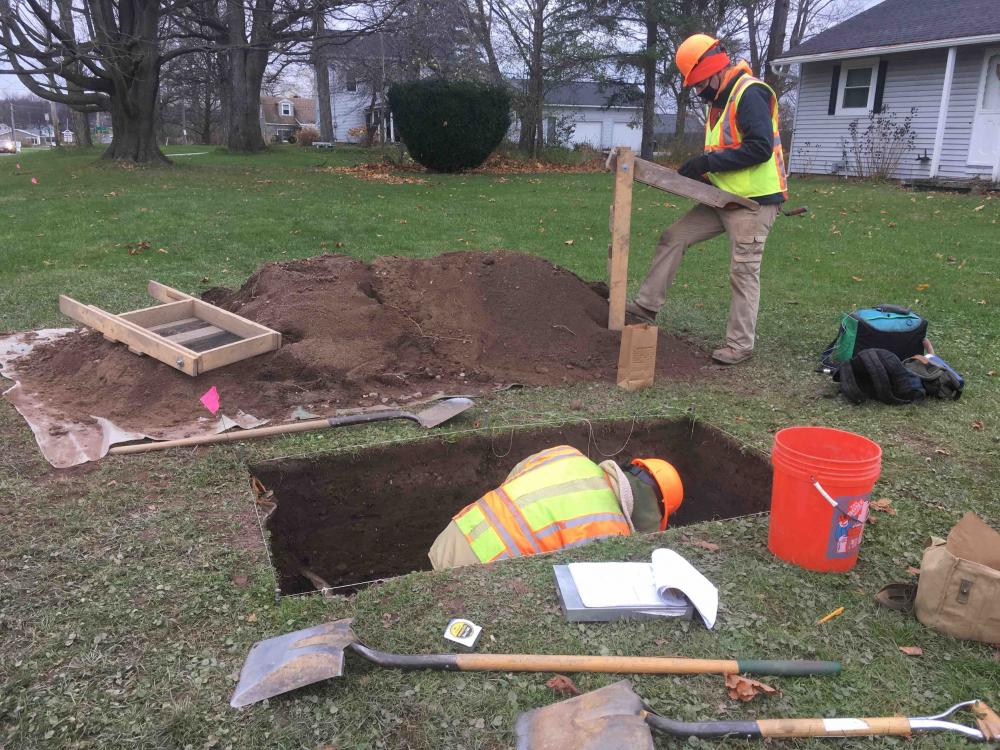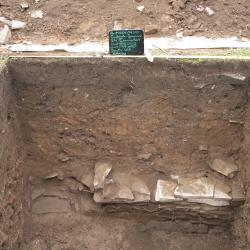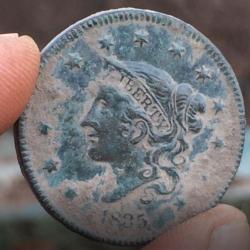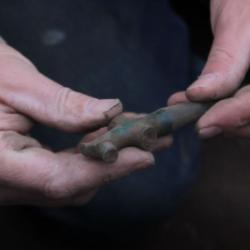Science Tuesday: CRSP Excavation and Discovery

In late Fall 2020, the Museum’s Cultural Resource Survey Program (CRSP) conducted a Phase 2 site examination of a historic period archaeological site in Central New York (see the NYSM Science Tuesday post from 11/24/2020). Among the goals of the excavation were to delineate the site’s boundaries and to determine if it meets the significance and other requirements for listing on the State and National Registers of Historic Places. Underpinning these goals was the aim to simply learn more about the site- and in this case, digging deeper led to a discovery different than expected.
Based on the original survey done earlier in 2020, CRSP staff believed the archaeological site was associated with a nearby house built in the 1840s. However, thanks to new evidence from the field and archives, the revised interpretation is that the building foundation uncovered in November is likely the remains of a pre-1817 tavern or inn rather than a private residence. Early 19th century taverns in New York served many functions: accommodation for travelers (as well as for owners), a place to have a meal or get a drink, and a gathering place for both locals and visitors. While historic research and artifact analysis are both ongoing, it is believed the site will shed light on this important type of “third place” of community life during the 19th century.






